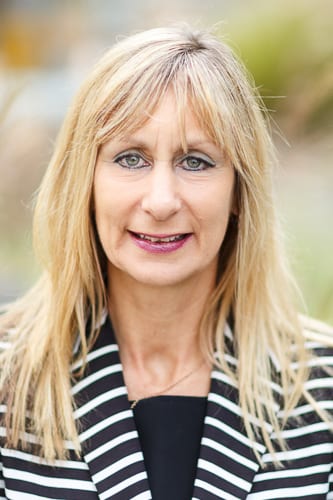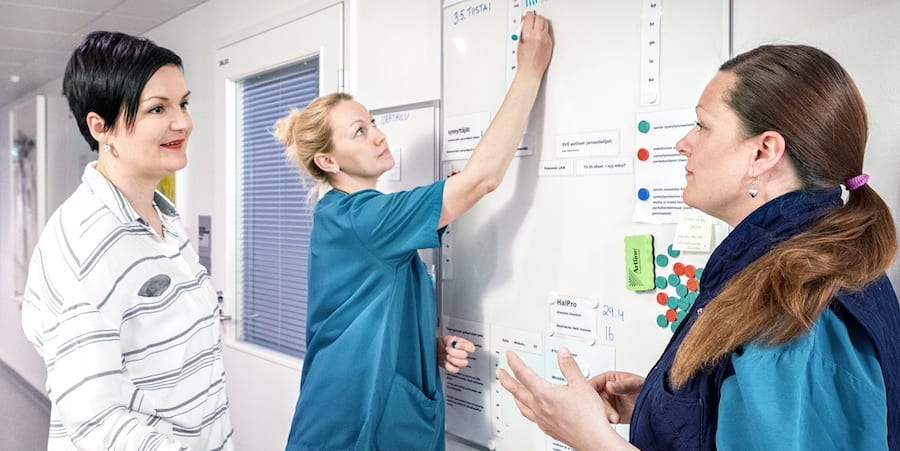
Melbourne - pushing the boundaries of lean government
CASE STUDY - How does lean contribute to making Melbourne one of the world’s most liveable cities year after year? Denise Bennett explains the approach followed.
Words: Denise Bennett, Lean Program Manager, City of Melbourne
With its cosmopolitan lifestyle, plentiful parks and gardens, well-designed streets and buildings, and a calendar full of major sporting, artistic and culinary events, Melbourne consistently rates at the top or near the top of international liveability indexes.
Employees at the City of Melbourne pride themselves as innovators who routinely reimagine how cities can function better. So it was always going to be interesting when a new outsider CEO arrived, bringing with her lean thinking and a vision of how to reinvent not the city this time, but the organization itself.

LEAN THINKING IN LOCAL GOVERNMENT
The City of Melbourne is leading the way in applying lean to local government in Australia, having embarked on its lean journey in earnest in 2009. As it often happens in organizations in sectors relatively new to the methodology, City of Melbourne staff was skeptical of the method’s application to local government and in the early years the sentence “It won’t work in my area – we are different” was frequently heard. However, we persevered and now all 30 branches (departments) within CoM have applied lean within their service streams to make things better, faster, cheaper and easier for customers, staff, the organization and the community.
We have learned a great deal about how lean can benefit an organization that comprises many different businesses, where silo thinking prevails and politically-driven imperatives largely determine the focus of the organization.
Applying lean in a local government setting presents some challenges. I learned about lean during my time in healthcare and spent many years translating it from manufacturing widgets to caring for patients.
In healthcare the concept of customer is clear: it always comes back to the patient, and when you are making decisions, putting the patient at the centre of the decision making is somehow easier.
At the City of Melbourne we can get easily confused about our customers: is it the residents, the businesses in the city, or the thousands of people that come to the city every day to work and visit? What is good for one group is often not good for another.
Additionally, organizational direction can change quickly in a political environment, where elected councillors are responsible for the delivery of a four-year Council Plan.
But in many respects local government is not different from other sectors. There are high-volume services and processes that will continue no matter what the political agenda, and they should all be continually improved to deliver as much customer value as possible.
[caption id="attachment_1276" align="alignnone" width="485"]

City of Melbourne's top 10 external-facing processes (non-contracted services)[/caption]
WHAT IS THE PURPOSE OF THE TRANSFORMATION?
The lean transformation (CoMLean) is led by the CEO, Dr Kathy Alexander. At the beginning of her tenure in 2008, she promised her staff that there would be no external efficiency reviews on her watch.
A year earlier, following such a review, almost 100 employees (over 5% of the total workforce) were made redundant and the organization was restructured.
This resulted in short term savings at a cost that was almost half the savings, extremely low morale, delays in delivery of initiatives as everyone tried to work out who their new boss was and what their new jobs were. What the restructuring and cost reduction did not do was increasing the efficiency or the effectiveness of the organization. In fact, there were many areas where processes were made less efficient because of the loss of a staff member whose job had been to own a process and coordinate it across the organization.
Kathy was committed to improving the performance of the City of Melbourne both in terms of efficiency and quality. She had some knowledge of lean thinking from healthcare and within a few months she convinced her senior staff to try a couple of pilot projects.
One of the projects returned AU$800,000 in the first year and another improved a long-term senior executive problem; as a consequence, the organization agreed to experiment some more. By 2010, CoM was deeply committed to lean as an improvement methodology and established an internal team led by myself.
Four years on, the key purpose of the transformation at City of Melbourne is clear: supporting the organization in delivering more value-adding services in response to increased population and community demand within the existing staff base, wherever possible doing more with existing resources.
Comparing the number of rateable (taxable) properties within the city to the number of staff in the organization is a useful way for the City of Melbourne to measure its performance over time. This indicator is heading in the right direction to demonstrate productivity gains.

STARTING WITH PROCESS IMPROVEMENT
A frequently asked question for new lean thinkers is "Where should we start?" We took the words of John Shook, CEO Lean Enterprise Institute, to heart: "It doesn't really matter where you start, just start somewhere."
{popup}

{/popup}
We began our lean journey improving high-volume or problematic services and processes. The CEO and executives chose the first projects and then took responsibility for sponsoring these large-scale improvements, known as Director Streams. We quickly learned the benefits of getting everyone together to map the process, including those who do and lead the work, across the silos and including externally contracted service providers. This was the first step in connecting senior leaders to the problems that existed within organizational processes.
Over five years, we have worked on more than 20 large-scale improvement streams.
We avoid using the word project to describe continuous improvement because carrying out projects is high-volume work within the organization as a method of delivering the Council Plan. At the City of Melbourne, projects have a defined start and end, with an on-time and on-budget focus.
Staff initially thought about the lean work in the same way. They were keen to get the improvement projects finished, with little understanding of the fact that continuous improvement means ongoing improvement, underpinned by the PDCA cycle, for the life of the process.
For many of the processes and services improved so far, mapping revealed there was no standard way of performing the process or, if there was, often staff did not follow it. Few processes had good measures of performance so it was difficult to determine how well a process performed. Thus, much of the improvement work focused on developing a standard or agreed way of working and supporting its implementation.
We sought the voice of the customer to clarify value from a customer perspective and then used this information to develop value-based process measures. We found many processes lacked design, evolving over time, layer upon layer, often relying on the expertise of single individuals, with risk of corporate loss if that person left the organization.
Staff started to consistently look for waste in organizational processes, with defects and over processing “just in case” being the most common wastes identified. This look in the mirror was important for us as we gained a sense of the amount of effort that would be required to create stable processes that delivered on our purpose.
We thought: if the City of Melbourne is already regarded as a great organization, how much better could it be if our processes were more effective and efficient?
With thousands of processes in the organization, the road ahead seemed daunting and, with a small improvement team of four, the CEO and senior leaders realized that building capability across the organization was going to be paramount.
[widgetkit id=23]
ENGAGING AND DEVELOPING THE PEOPLE
Lean cannot be sustained by a centralized improvement team. It requires engagement and commitment from those who do the work as well as support of leaders, who are responsible for those who create real value for the customers of the organization. In 2011, engaging and developing staff in improvement commenced formally at the City of Melbourne. The Lean Lea(r)ning Pathway has itself been the subject of improvement and PDCA based on participant feedback and observed outcomes of the learning in practice. All programs are developed and delivered in-house, using simulations based on local government processes.
For City of Melbourne staff, learning about lean starts at induction and continues through various levels until the Lean Practitioner status is reached. More than 50% (700) of staff has now completed Lean Basics, a one-day introductory course on lean principles, waste and A3 thinking.
More than 100 of these staff members have gone on to complete a Lean Learner qualification where they apply what they have learned to their work. The Lean Learners program provides support and guidance for individual staff to tackle their first A3 and has helped the organization demystify the art of A3 thinking and filling in those six boxes, a skill previously owned by the internal lean team.
I was somewhat skeptical about asking staff to work on an A3 after just one day of lean training (it took me years to appreciate A3 thinking). However, my team have proved me wrong. It can be done.
In fact I think this is the most significant step we have taken in the past year: developing deepening A3 thinking skills in operational staff, while cultivating a culture where staff are lining up to continue the lean learning pathway - and we can't meet the demand. What a great problem to have!
Here's a few examples of Lean Learner contributions to the CoMLean winlog:
- Steve from Engineering Services, reduced the time it takes to replace residents existing garbage bins with larger bins by 30% (from 17 days to 12 days);
- Melbourne visitor shuttle ticket stubs use to take 11 minutes per day to sort and reconcile. Kerry has reduced the time to 3 minutes a day, releasing 53 hours a year for value added work;
- Emma from Parking and Traffic removed wasteful steps from the process of handbill rejection letters reducing the time taken from nine minutes to two minutes and releasing 140 hours of staff time per year.
Lean Practitioner is the next level of learning and is designed to equip leaders and senior operational staff to lead the lean effort within the organization. This course, developed in-house, has attracted more than 100 staff, with the status of Lean Practitioner highly regarded within the organization.
The 22-week course is hard work, with classroom teaching, weekly homework and reflections, a lean improvement project and an exam at the end of the course. Many lean champions are identified through this course and their contribution to the organization’s journey of transformation has allowed us to test the concepts in almost all work environments.
In addition to building capability, Lean Practitioner has helped to break down barriers across a large, diverse and hierarchical organization, creating a common language across professional groups. In 2014, we gained certification of the Lean Practitioner course, which is now recognised by a local university. This means participants are rewarded with a formal qualification for their efforts in addition to the improvement they deliver to the organization.
BUILDING LEADERSHIP AND THE MANAGEMENT SYSTEM
Lean at the CoM is led from the top. Kathy will admit she was new to the approach, however the more she experienced it, the more she became aware that lean needed to form the basis of the organization’s leadership development system. To this end, in 2012 Kathy brought together the Lean Transformation, Organizational Development and Planning and Performance teams. Since that time, leadership programs have focused predominantly on developing lean thinking skills. Nine core leadership capabilities are now identified, with “leads improvement” and “develops and coaches others” articulated as the top two.
Kathy practices her lean leadership skills every day, replacing her notebook with a pad of A3s and her favourite coaching questions. She recently told me: "I learnt that I wasn't really coaching until I started asking the right questions - I was still telling, and that I was more likely to ask questions if I say on my hands."
The City of Melbourne has realized there is a lot to be done in relation to leadership development.
"Most efforts were previously focused on emerging leaders,”said Tanya Athans, who leads the Organizational Development team. “We did not have a standard way of assessing and developing leaders that aligned with a lean organization. We still have a long way to go, but at least now we know where we want to get to and the path to get there is becoming clearer."
In 2013, senior leaders who had not engaged with lean took part in a new program called The Way We Work, which is a five-step process designed for any work area to help understand how to use lean as a management system. It begins and ends with the customer.
{popup}[caption id="attachment_1279" align="alignnone" width="583"]

City of Melbourne Way of Working[/caption]{/popup}
The 24 leaders who came together for the program worked to articulate clearly what the organization did – its core value streams. This thinking has proved extremely useful for an organization that a few years ago saw itself as 30 discrete and autonomous businesses, many of which had little in common. These value streams will be used going forward as the basis for thinking about processes and improvement efforts.
[caption id="attachment_1280" align="alignnone" width="517"]

Guiding principles[/caption]
WHAT IS THE BASIC THINKING THAT DRIVES OUR TRANSFORMATION?
The basic thinking that underpins the CoM lean transformation is A3 thinking. For an organization of innovators, coming to terms with deeply understanding the problem before thinking about a solution was difficult. However, the organization has made real progress with respect to this. "What problem are you trying to solve?" is a frequently heard comment around the executive table. The increased requirement for data and fact by the executive table drives lean analysis as part of the work the organization does every day, including requests for staff and new projects.
GOING FORWARD
The impact of lean on how we now think and act as an organization was evident in our recent financial performance. At the Australasian Lean Thinking and Practice Summit, recently held in Melbourne, Kathy shared some of our progress with delegates:“Over the past two years, we have kept cost increases below CPI. During the same period we have built and staffed three new libraries, a new recreation centre, we have run three new major events a year, doubled the sustainability program, introduced an urban forest program, expanded capital works and water saving programs while also accommodating the increased demand for human services resulting from a 20% population increase. During this time we have not reduced or ceased any service. Despite all of these new programs, the number of assessable properties per Full Time Equivalents has increased by 8% since 2010. Lean thinking supports our effort to do more with our existing resource base.”
With thousands of processes across the organisation that represent endless opportunities for improvement, we constantly struggle with the question "Are we working on the right thing?" Improving one process inevitably reveals another three we could improve, and maintaining performance in areas previously improved continues to challenge us. However, our focus on deep learning of the method is paying off and I liken it to making a patchwork quilt. We now have more people who can practise the craft so we are making more and more patches, whilst improving the quality of the patches. Our focus on purpose, people and process allows us to bring the patches together into something that will be functional (an effective and efficient organization) but also a work of art – a thriving, energetic organization of problem solvers who are constantly focused on making things better for customers.
THE AUTHOR

Denise Bennett supports the lean transformation effort at City of Melbourne. Denise has a nursing background and first learned about lean while in healthcare. She was one of the team at Flinders Medical Centre, Adelaide, the hospital that pioneered the application of lean in Australia, transforming the way patient care was delivered. Denise went on to help many other health services across the world, improve patient flow and the quality of care through a lean thinking. Over the past five years she has translated what she learned in healthcare into a local government setting. Denise was a founding member of the Australasian Lean Healthcare Network and continues to serve on the executive board. She is also a faculty member of Lean Enterprise Australia and for the past two years she has convened the annual Lean Thinking and Practice Summit.
Read more


CASE STUDY – The whole of Helsinki’s hospital district is leaning out, with incredible results. It isn’t every day that we come across – let alone have the opportunity to observe – a lean transformation in such a large healthcare organization.


FEATURE – The author explores methods to expand your flow “sweet spots”, enhance focus, and achieve a state of effortless productivity.


NOTES FROM THE GEMBA – The author visits a comparison website that is gradually integrating agile and lean thinking in its processes, identifying new and exciting improvement opportunities.


INTERVIEW – An American group of restaurants is experimenting with the application of lean thinking in its kitchens and dining areas. Planet Lean had a word with the chefs to see what’s cooking.

